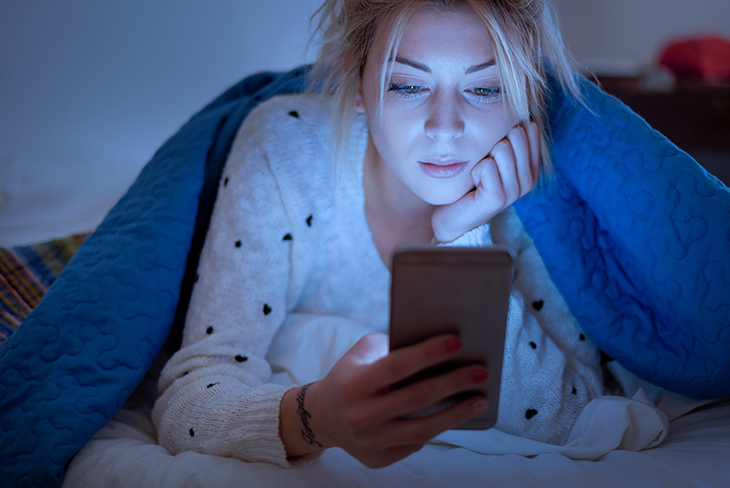Blue light: the good and the bad

Life in the 21st century is heavily reliant on technology, and while these devices are inextricably part of our lives, we do have to exercise caution when we use them.
According to Harvard Health, blue light, which is emitted from digital devices, including LED televisions, smartphones, tablets, laptops and computers, is environmentally friendly, but can disrupt sleep and potentially cause disease. In recent years, there has been a steady increase in chronic fatigue and non-communicable diseases, such as cancer, cardiovascular disease, diabetes, stroke and obesity, and researchers believe there is a link between blue light exposure and these potential health risks.
What is blue light?
Blue light is a colour in the ‘visible light’ spectrum ranging from 380 to 500nm (nanometers). It is sometimes further broken down into blue-violet light (roughly 380 to 450nm) and blue-turquoise light (roughly 450 to 500nm). Similar to UV light, the blue light that is visible – the portion of the visible light spectrum with the shortest wavelengths and highest energy – has both benefits and dangers.
Positive effects of blue light
The news about blue light is not all bad since – during the daylight hours – it is responsible for boosting attention and alertness, assisting with memory and cognitive function and elevating mood. Blue light is also used as a therapy to treat seasonal affective disorder (SAD), which is a type of depression that’s related to changes in seasons. There is even research that spectacles that have lenses with a special blue light filter are beneficial after cataract surgery – especially if you spend long hours in front of a computer.
Negative effects of blue light
But there are also potential hazards. Digital devices, which all emit blue light, have been known to suppress the production of melatonin (commonly called the sleep hormone). Melatonin is responsible for controlling your sleep-wake cycles and blue light inhibits the brain’s ability to distinguish the change from day to night and hence fall asleep. A bad sleep cycle disrupts the hormone levels that are responsible for appetite control, so changes in these levels may contribute to you becoming overweight or obese. Blue light also affects your health in the following ways:
- Blue light contributes towards eye strain, causing headaches, dizziness and blurred vision
- Increased exposure may increase the risk of macular degeneration since blue light penetrates all the way to the retina, potentially causing harm to the cells
- Greater risk of certain types of cancers, diabetes, heart disease and obesity
- Evidence of mood disorders and depression due to disrupted circadian rhythm
What can you do to protect yourself?
Researchers agree that prolonged use of electronic devices and exposure to the blue light they emit could be harmful to your eyes and vision on varying levels. These are some of the ways you can reduce exposure.
- Limit your use of digital devices at night to two to three hours before bed.
- Use dim red lights for night lights since red light does not suppress melatonin.
- Consider wearing glasses that filter blue light when using technology.
- Fit your devices with a screen filter, which helps to block the harmful light.
- Utilise the ‘comfort view’ settings, which are available on newer devices. This enables you to change sharp screen light to warmer light.
The information is shared on condition that readers will make their own determination, including seeking advice from a healthcare professional. E&OE. Life Healthcare Group Ltd does not accept any responsibility for any loss or damage suffered by the reader as a result of the information provided.

